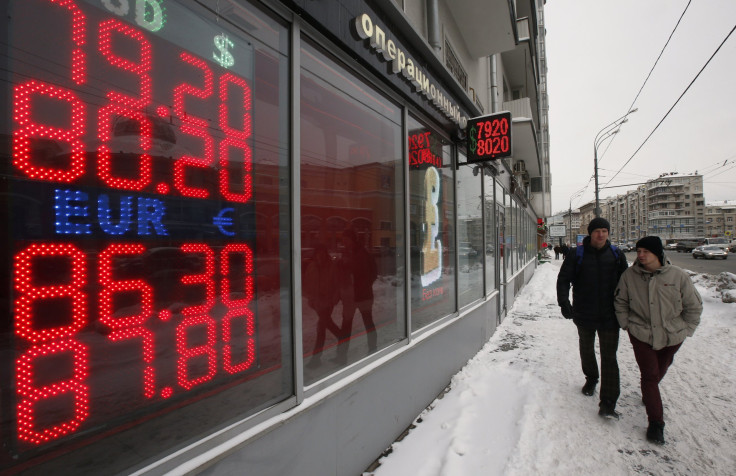Russia Looks To Oil Hedging, Social Security Cuts To Shore Up Economy Amid Tanking Ruble

With oil prices hovering in the $30-a-barrel range and the ruble hitting an 18-year low this week, Russian officials said they're planning for a worst-case economic scenario and drawing up an anti-crisis plan as anxiety levels among average citizens continue to rise. Officials said Saturday they will ease administrative costs for energy producers, while eyeing the possibility of introducing hedging for the oil sector and cutting a social security program.
“At the current oil prices and floating exchange rate, [the] oil and gas sector should increase efficiency, keep costs down and one more time revise their investment plans,” Energy Minister Alexander Novak said, the state news agency TASS reported. “As for any additional support, it will not be financial but more in the field of simplifying administrative procedures related to business activities, administrative barriers.”
Mexico introduced hedging — a process that involves spending on derivatives to ensure a future selling price — in the 1990s, allowing it to protect its economy against a strong drop in prices, the Financial Times reported. Russia’s commodity-dependent economy pegged its 2016 budget to oil prices at $50 a barrel, causing the country’s reserve fund to start drying up — with the potential for it to be completely drained by 2017.
“It’s obvious that all [of the oil and gas revenue] cannot be hedged,” Deputy Finance Minister Maxim Oreshkin said. He said if Russia introduced hedging, the economic move would help the country, Reuters reported.
Tumbling oil prices, which fell from a high of over $100 a barrel 18 months ago, have been caused by lower demand from China and high output from OPEC giant Saudi Arabia. The current oil glut has approximately 1.5 million extra barrels on the market every day, forcing the Kremlin to admit that government spending will have to be cut in order to keep its deficit under 3 percent of its gross domestic product. The International Monetary Fund downgraded its economic forecast for the 2016 Russian economy Tuesday from a 0.6 percent contraction to 1 percent.
Russia’s anti-crisis plan could come with a price tag of $5.1 billion and is expected to target the weakest sectors of its economy, AFP reported. Officials are also considering cutting a five-year-old social security program, underscoring how dire the situation has become.
Western economic sanctions following Russia’s annexation of Crimea from Ukraine in March 2014 also remain in place, further straining the economy. While U.S. Secretary of State John Kerry hinted at the World Economic Forum in Davos, Switzerland, this week that sanctions could be lifted if the terms of the Minsk peace plan for Eastern Ukraine are met, fighting continued in the region Saturday.
While Russian President Vladimir Putin told his citizens the worst of the crisis appeared to be over in December, protests across Russia are slowly growing as conditions continue to worsen.

“The Russian people got what they wanted — a czar ruling the country,” said Sergei Titov, who was protesting transportation subsidy cuts, speaking with the New York Times. “What we need is an effective manager, but what we got is the Olympics, soccer and war.”
With economic conditions continuing to deteriorate, giving way to the possibility of more protests, the president’s adviser on internet development said Saturday that the Kremlin has the right to access the personal data of its citizens.
“The state, if it suspects you of something, can get access to wiretapping through [a] court even now. No one is arguing — there will still be problems. But the position is clear: The state has the right to listen in,” he said.
© Copyright IBTimes 2025. All rights reserved.






















